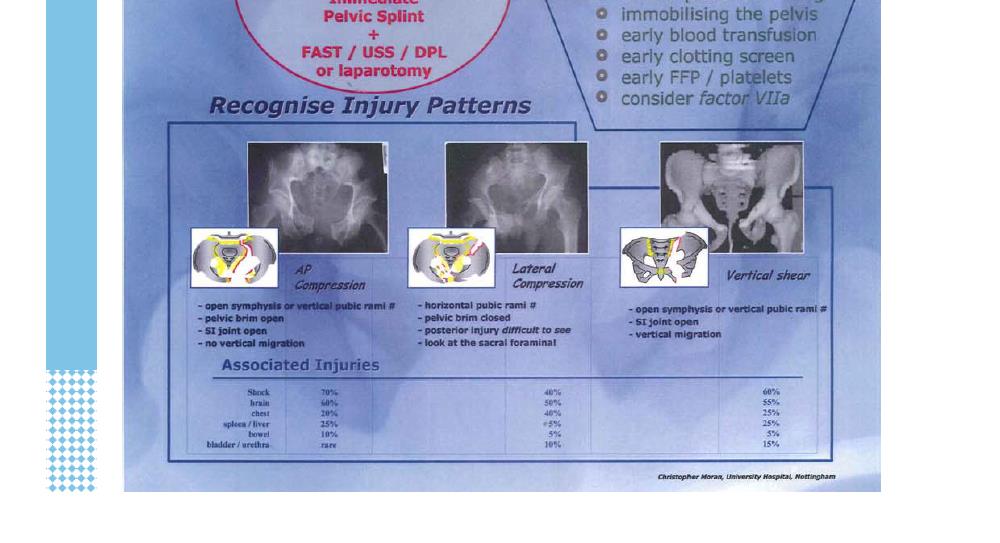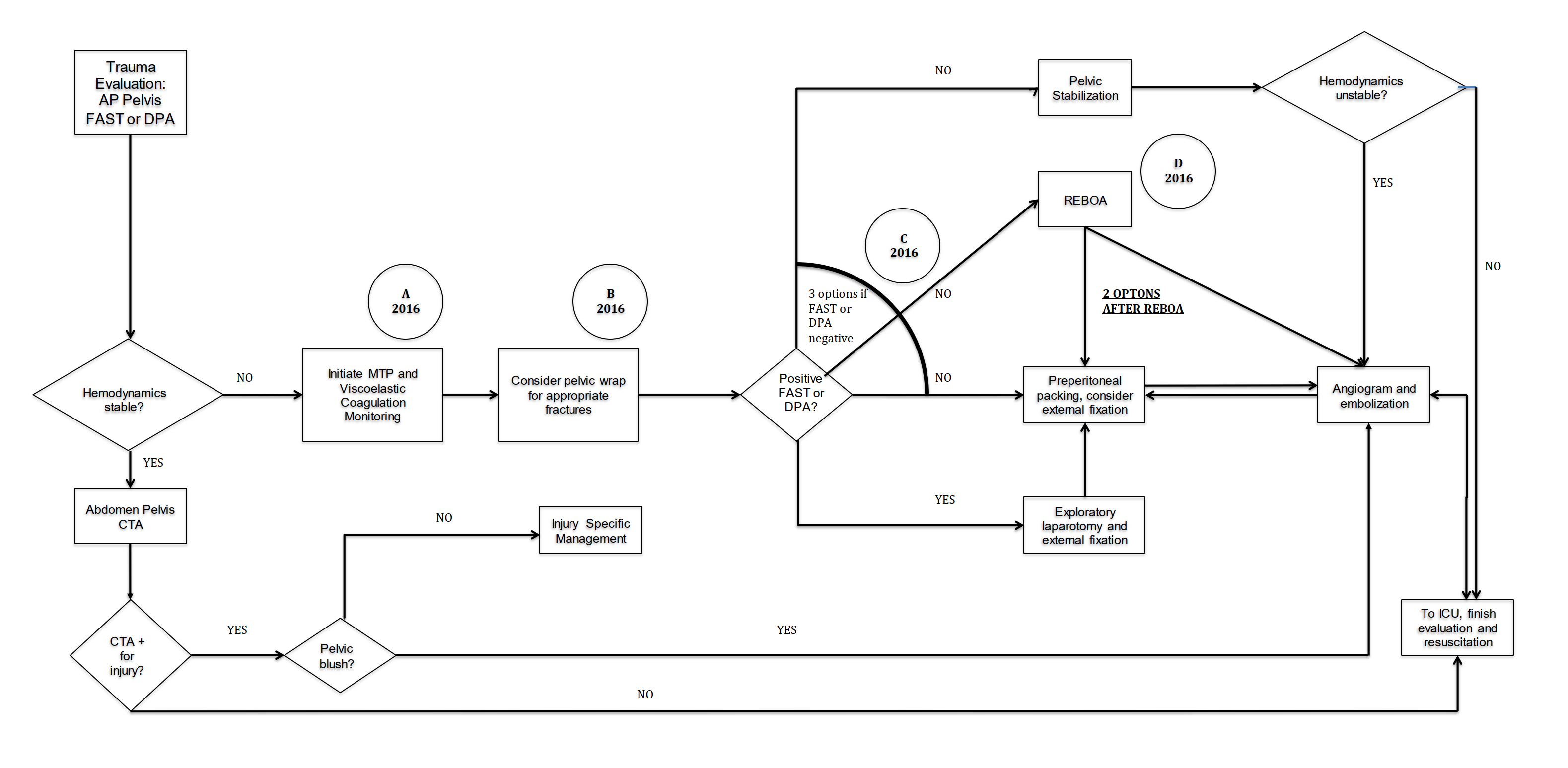- Follow ATLS Protocol – ABC’s first
- Protect the spine and pelvis at all times
- Pelvis fracture suspected – immediately splint with sheet or binder
- Early pelvis x-ray is essential
- Do NOT test pelvis for mechanical stability
- Do NOT log-roll patient until pelvis cleared
- Do NOT pass urinary catheter until pelvis cleared
- “The first clot is the best clot.” Reduce bleeding by:
- Careful patient handling
- Early pelvis immobilization
- Early blood and blood product transfusion, normalize coags, consider TXA if active hemorrhage, thromboelastometry
Recognize injury patterns



